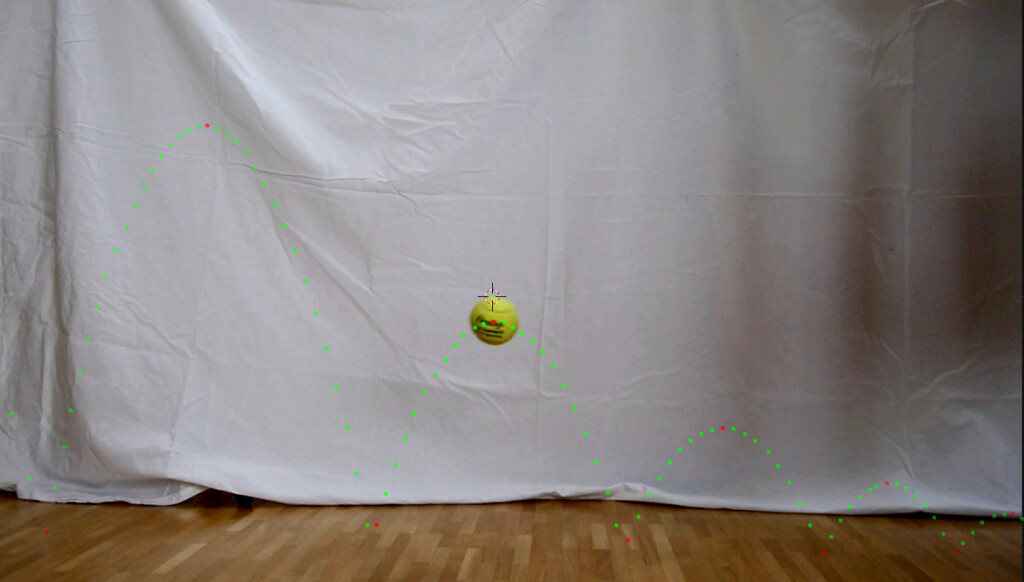To revive my Blender skills, I’ve been tinkering with setting up a simple bouncing ball animation. How do you keyframe this properly, without running a physics simulation? There are tons of tutorials on the web on basic bouncing ball demos, but few go into details about what a physically plausible bouncing ball trajectory would look like. As it turns out, with an ideal bouncing ball, there are only a few basic ingredients:
- The path is obviously a series of parabolas
- With each bounce, a roughly constant fraction of the energy is lost. The exact value depends on the material of the ball – the magic term is “coefficent of restitution” (COR). The height of each parabolic arc is f * previous_height, where f is in the range (0,1).
- Assuming no slowdown in the horizontal direction, the distance between touch down positions (resp. duration of a bounce) shortens with the square root of f.
So far, so good, but is this model realistic? I did a few experiments tracing bouncing ball trajectories from video.
First, a tennis ball (at 50 fps):

Doing rough calculations based on the pixel positions of the ball’s center, the behavior is close enough to the model, with a COR of roundabout 0.55. Great.
Second, a very squishy rubber ball:

Surprise: The same calculations show that this ball keeps bouncing a bit higher than expected every time! The COR raises from 0.34 to 0.55 over four bounces. I even repeated the experiment, with similar results. Apparently, a non-constant COR is not unusual at slow speeds, as mentioned e.g. in the Wikipedia article on the subject.
